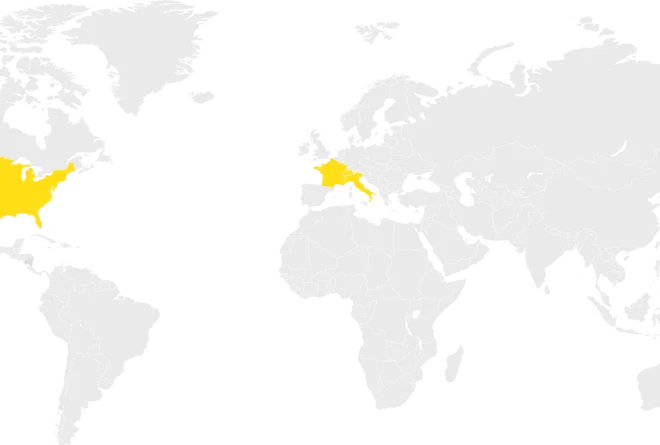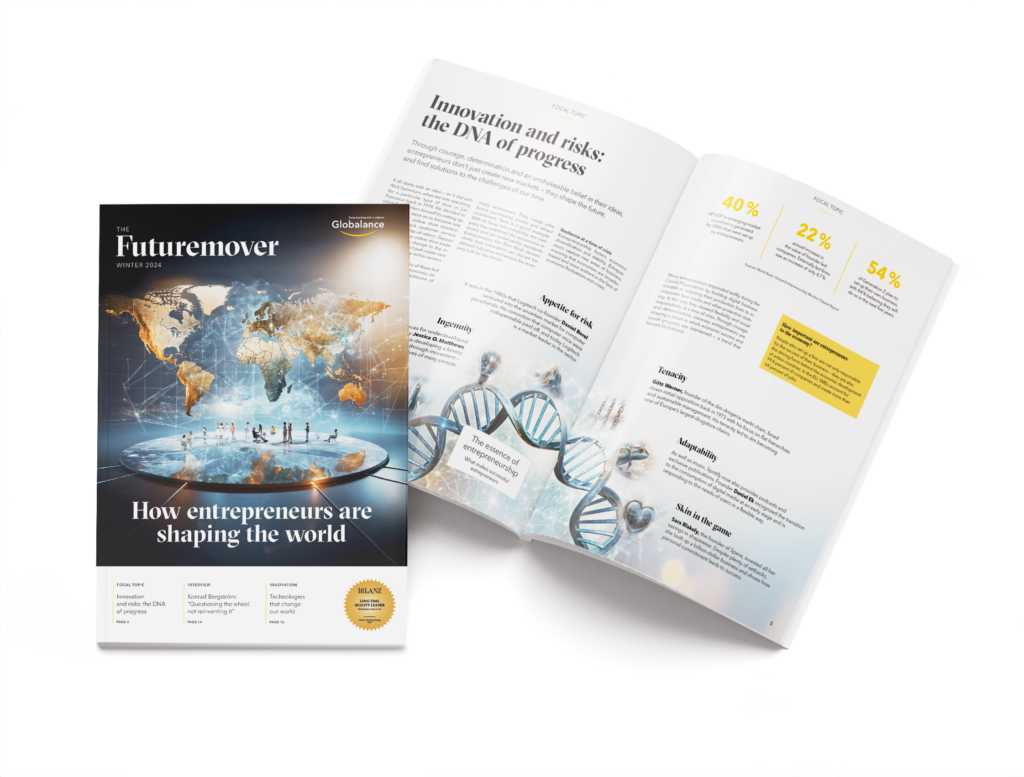News & Trends
How Nature Inspires and AI Can Protect

PURSUING THE SHEER IMPOSSIBLE — Whoever does this either remains unsuccessful or hits the jackpot. Researchers all over the world are working on technologies that are difficult to imagine today, but have huge potential. Weighty sources of inspiration: nature and artificial intelligence.
Due to evolution, we can still learn a lot from nature, as the animal and plant kingdoms are so much older than us humans and have always adapted to changing circumstances in an exemplary manner. The Velcro® fastener, for example, invented by the Swiss George de Mestral in 1951, has its origins in burdock weed, the small barbs of which de Mestral had to laboriously remove from his dog’s fur after walks in the forest. And the lotus flower’s ability to repel water and dirt has long been exploited by industry. The German botanist Wilhelm Barthlott’s findings of constructing surfaces like those of the exotic plant are still used today in lacquers and on façades, among other things.
The still young science that deals with technological development taking nature as a model is called bionics — a neologism made up of biology and electronics
Disruptions only become recognisable as such once they achieve success.
The Cloud in a Flower
Disruption means drastic change. Something completely different takes the place of what we know. Before new ideas gain widespread acceptance, they are naturally often difficult to imagine. Disruptions have the thankless status of only becoming recognisable as such once they actually achieve success. Some current projects therefore seem quite futuristic. For example, the Data Garden by Cyrus Clarke and his team. They have found a way to convert data into a biological format and use it in plants in this way. Digital data, whether it is an image file, a text or an mp3 file, can be represented as binary bits (0 and 1). According to Clarke, these can be stored in molecular form and injected into plants as a liquid. The beautiful vision: huge data centres, which already consume more CO2 worldwide than aviation, are to be replaced by environmentally friendly gardens as data storage facilities.

ChatGPT: Helping to Protect the Environment?
Artificial intelligence, when used correctly, can be a real game changer in many fields — including environmental science. Which tree species should be planted to adapt a forest area to climate change? How can waste sorting be further optimised so we get an even better recycling rate? How can future generations be better prepared for the new challenges? Or how can freight transport be made even more climate-friendly? Questions which AI can provide suitable answers to — quickly, precisely and taking unimaginable amounts of data into account. The “Generative Pre-trained Transformer”, currently better known as ChatGPT, can possibly do more than just write texts and answer specific questions. The cutting-edge natural language processing (NLP) model holds significant disruption potential in a number of industries. For example, in the field of education: Khan Academy, a Californian non-profit organisation that provides free digital learning materials, shows with its AI-in-the-classroom approach how GPT-4 can become an assistant for teachers and a personal AI-assisted tutor for students. At the moment, there is still a lot of debate about whether it is the devil’s tool or a blessing for the future. Probably a bit of both is tucked away in it.

But with the ability to understand, generate and classify texts, ChatGPT can be used to improve sustainability efforts. Data analysis is automated and provides insights that would otherwise be difficult to discover. ChatGPT can be used, for example, to monitor carbon emissions or biodiversity change by analysing text data such as government reports, news articles and scientific papers. As environmental research often generates extreme amounts of data (sensor readings, satellite images, text data) from various sources. Identifying patterns and trends in this data can provide valuable insights into existing or emerging environmental problems — and, at best, offer solution approaches. Positive disruptions never arise from just one source of inspiration. Therefore, we can continue to learn from the past and from nature without having to close our eyes to innovative transformations. Because we can use all the help we can get to meet the challenges of the future.
Want to learn more about artificial intelligence from an investor’s perspective? Our in-house avatar, created with the help of AI, will take you on an exciting journey through the world of artificial intelligence.
You can find more interesting topics in our Futuremover magazine.



